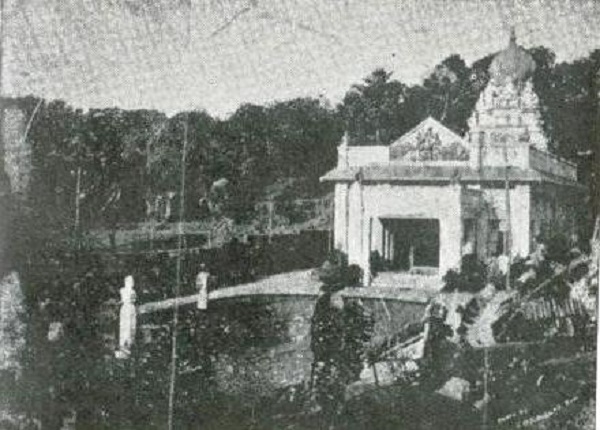Veer Savarkar and Patitpavan Temple- Part 1
Total Views |
SwatantryaVeer Vinayak Damodar Savarkar (28 May 1883 - 26 Feb 1966) was a fearless freedom fighter, social reformer, writer, novelist, litterateur, dramatist, poet, historian, political leader and philosopher. But he is largely known as a revolutionary freedom fighter and exponent of Hindutva. It is widely unknown that he was also an outstanding social revolutionary.
Savarkar stated that if freedom was won without social reform, it would not last even for three days. Savarkar was not an armchair reformer, he was an active social revolutionary. Savarkar was a practising intellectual and therefore he not only made his point through his writings but also the fight against untouchability was backed by actions.

Patit Pavan Mandir, Ratnagiri
He had undertaken the movement to grant access for untouchables (Savarkar preferred Poorvaasprushya or ‘ex-untouchables’) into temples. He clearly said that ‘God who becomes impure by worship by an ex-untouchables, is not God’. In 1925, Savarkar was successful in convincing the members of the Gurav caste that they should allow the people from the ex-untouchable castes to perform prayers along with them. Speaking on the occasion, Savarkar said "Worshipping God is the birth right of Hindus of all castes. To allow them to exercise this right is real righteousness. Only when all Hindus are allowed to worship at a temple will they develop a sense of belonging towards the religion and community."
Thereafter in 1927, as the next step in his movement for temple entry for all, Savarkar organised a congregation of Hindus from various castes at Ratnagiri, a district in Coastal Maharashtra which was a bastion of conservatives. This was followed by a meeting on 29th November 1929 which aimed to allow entry of the ex-untouchable castes in the sanctum sanctorum of the Vitthal temple. At this meeting, Savarkar through his persuading skills convinced the people to open the gates of the Vitthal temple to the ex-untouchables.
Bhagoji Seth Keer of Ratnagiri who was a businessman from Mumbai was a Bhandari by caste and a devotee of Shiva; however, being a member of the Bhandari caste, he could not perform puja at the old temple and this fact pained him. He had hence decided to build a temple where he could get the satisfaction of performing puja himself. Accordingly, he got that temple built. A festival was held at this temple each year during Mahashivratri. Bhagoji Seth invited Savarkar for the festival upon which Savarkar said "You are wealthy so capable to construct a temple but what about the poor untouchables? They have access to neither a temple not God nor to worship. If you could build a temple where Hindus of all castes can pray together, then, I will admit that your anger against the conservatives (Sanatani) is justified" (Ratnagiri Hindusabheche Prativrutta, Volume- 2, Publisher- Dr. M. G. Shinde, 1937, Page 11)
On Mahashivaratri, 10 March 1929, Shankaracharya Dr. Kurtakoti laid the foundation stone of this temple, with financial help from Bhagoji Seth Keer (around Rs. 100000/- 1920 prices) and under the leadership of Savarkar. Speaking on the occasion Savarkar said "I had this idea for some time now. Indeed, the Kashi Vishweshwar, Jagannath Puri, Dwarka, Rameshwar and other temples should be subject to certain rules and regulations, open for darshan to Hindus of all castes. No Hindu should be denied access on the basis of birth-based caste distinction. However, I thought that until this principle is accepted by society, there should be at least one temple that has its doors open to all Hindus."


